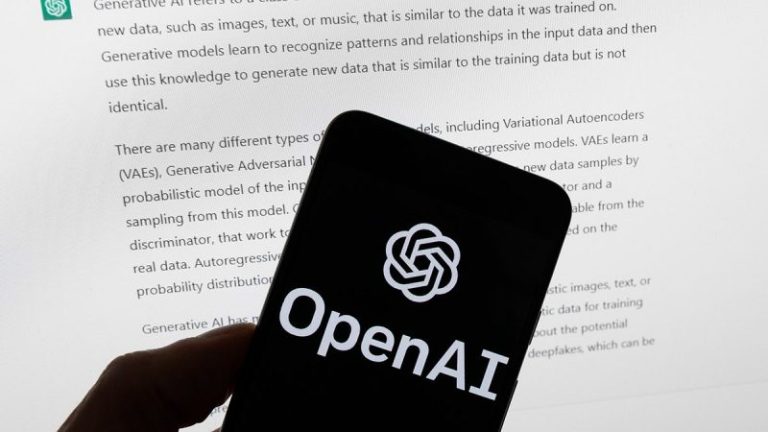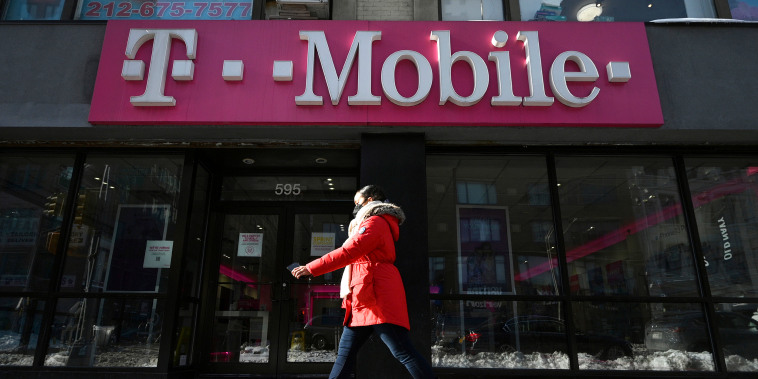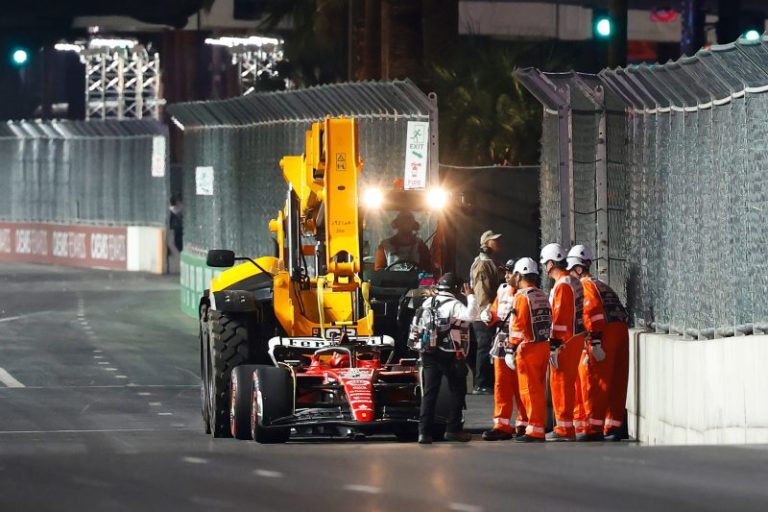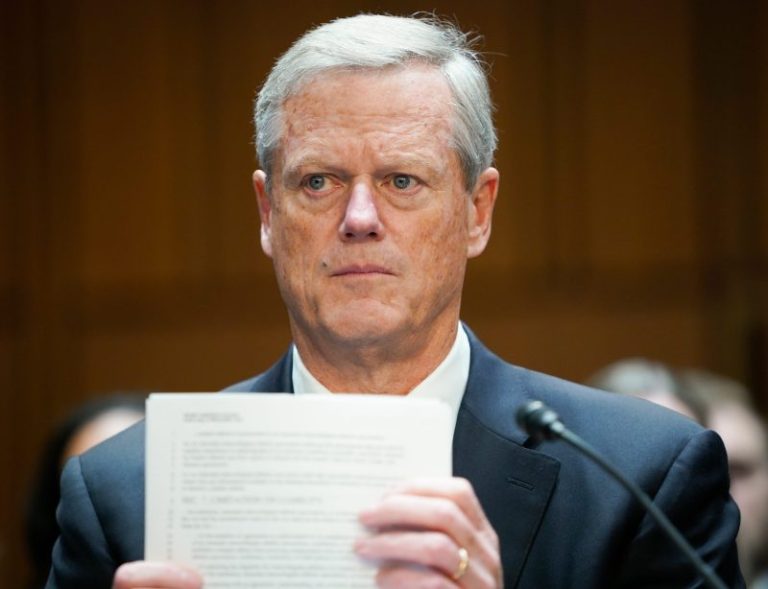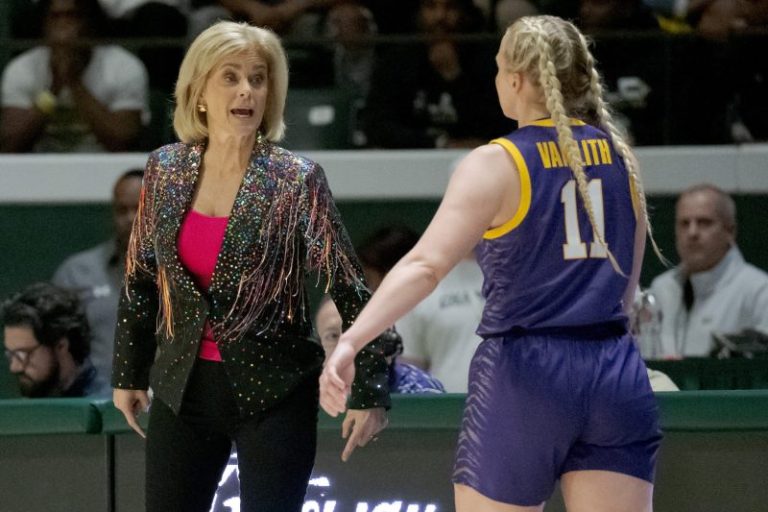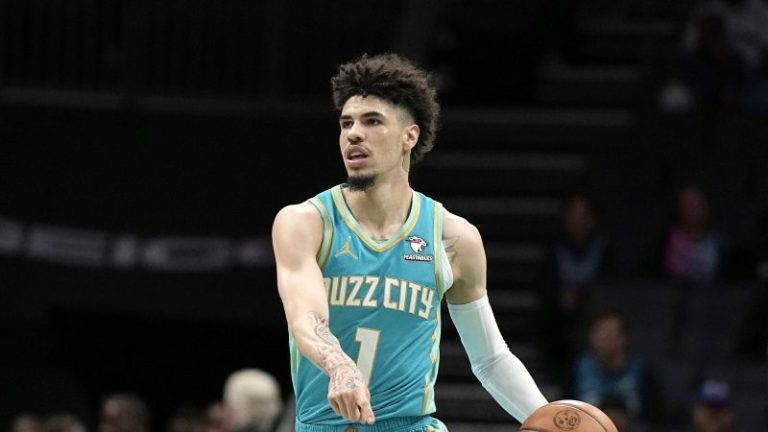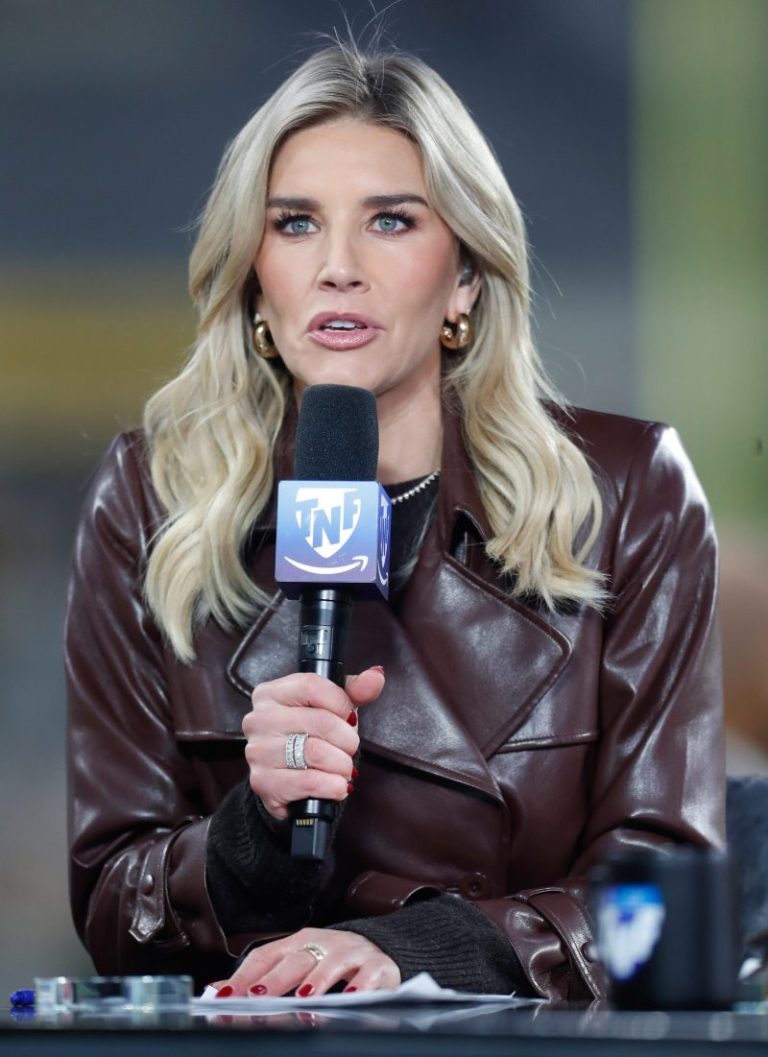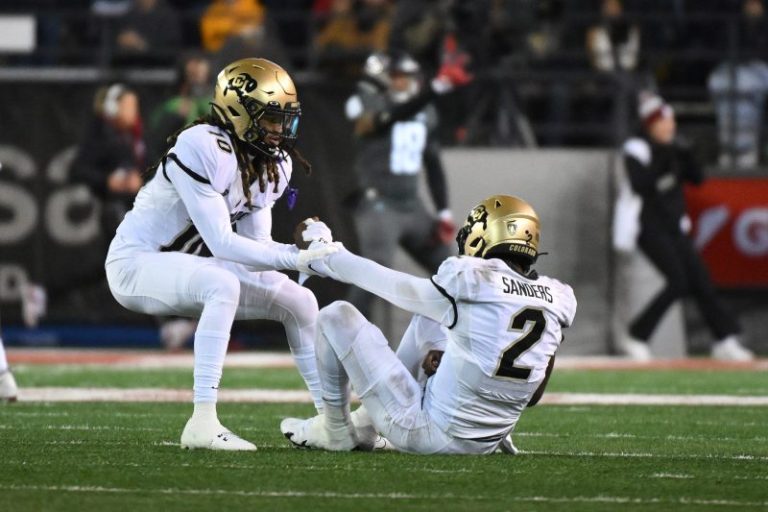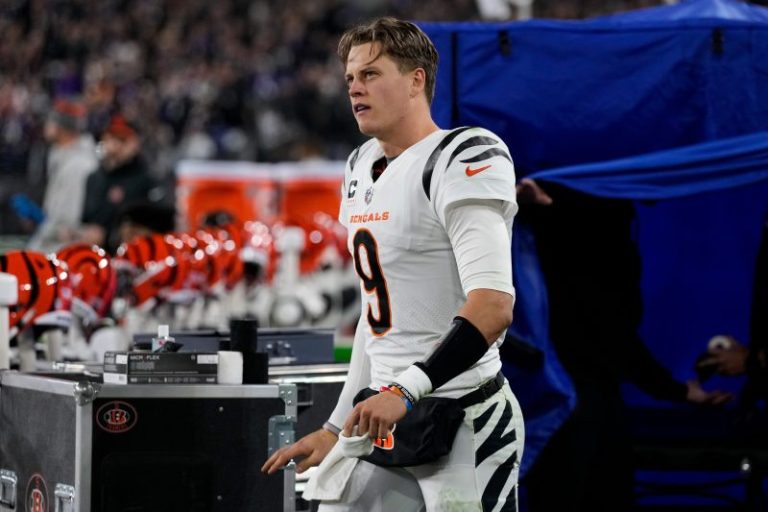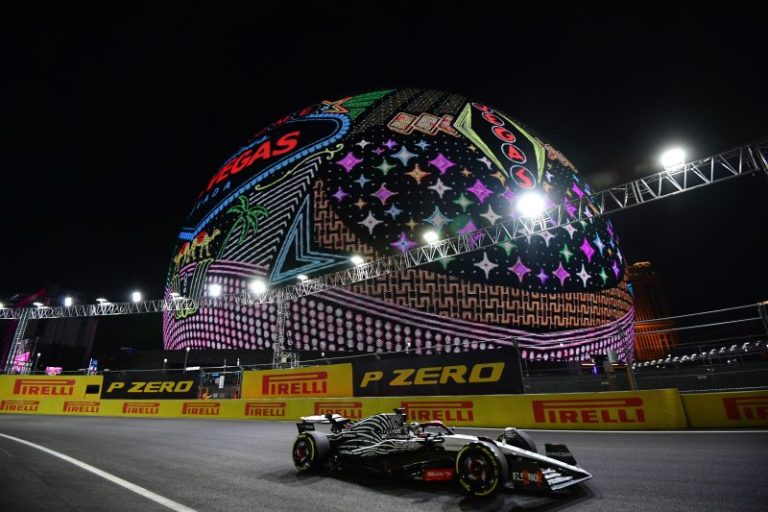The vision for the Las Vegas Grand Prix was born after Liberty Media completed its purchase of Formula 1 in 2017, with a goal to increase the global reach of the motorsport series.
When Renee Wilm went to the Clark County Commissioner’s office in Vegas with the idea of the night race along the iconic Strip, it was a pipe dream.
‘When we first came to town a few years ago and sat before everyone and said, ‘We want to close the Las Vegas Strip and we want to encapsulate 60,000 rooms, but it’s all going to be fine,’ they all sort of looked at us like, ‘What is this woman smoking?’’ Wilm, the chief executive officer of the Las Vegas Grand Prix, told USA TODAY Sports during an August interview.
‘But we sold them on the dream and just what we can bring to this town.’
What exactly the event brings is an estimated $1.2 billion economic impact, Wilm said, and an international audience.
Emily Prazer, chief commercial officer of the Las Vegas Grand Prix, relocated from London to take on the upstart project. She said unlike a Super Bowl or major league sports team, the race will bring eyes to the entire city and not just a single venue.
‘When you have a street race, it’s not specifically the Allegiant Stadium or the T-Mobile Arena. It’s the whole city with cameras and helicopters and everything else,’ Prazer said. ‘So it really does put them on that level of global stage.’
Early issues with the F1 Las Vegas Grand Prix
What the world saw early Friday morning during the first practice session of the Las Vegas Grand Prix was the difficulties of putting on such an event. Ferrari driver Carlos Sainz’s car was damaged when he drove over an unsecured drain cover. Formula 1 delayed the second practice session to 2:30 a.m. local time to allow officials to repair the track and ensure it was safe.
On Friday evening, Wilm and Formula 1 CEO Stefano Domenicali released a statement to address the situation.
‘Our top priority at Formula 1 is the safety and security of our drivers, employees, and fans,’ the statement said. ‘Responsibility for the oversight of a Formula 1 event falls with Formula 1 as the commercial rights holder of the sport, the FIA as the regulatory body, and the local promoter, in this case the Las Vegas Grand Prix.’
The executives gave reason as to why the remaining fans who waited to watch the second practice session were told to leave an hour before its start time. The statement said that the decision was made to manage the capacity of public safety officials, shuttle drivers and hospitality staff.
‘We know this was disappointing,’ the statement continued. ‘We hope our fans will understand based on this explanation that we had to balance many interests, including the safety and security of all participants and the fan experience over the whole race weekend.’
The race is set to take place Saturday night at 10 p.m. local time, which is 1 a.m. ET Sunday.
Leading up to the event, ticket prices for the race, which initially started at $2,000, fell as demand for the spectacle wasn’t met. Fans said the race didn’t connect with its core audience, and the weather is less than ideal. The race is projected to be one of the coldest in F1 history.
Wilm acknowledged the process of setting up the inaugural event has not been smooth sailing. Planning started during the COVID-19 pandemic, which meant Prazer and others were stuck in the United Kingdom during the early stages. Liberty Media is promoting the race itself and spent $240 million to purchase the land for the paddock and an estimated hundreds of millions more to build the track and event’s infrastructure.
‘We of course have bumps in the road, whether it’s traffic congestion or just working through what is the asphalting look like, hearing our local business owners, responding to their concerns around safety and transportation,’ Wilm said.
But she said the Clark County Commission and Las Vegas Convention and Visitors Authority have been supportive throughout the process. In February, local officials showed their commitment to Liberty Media by granting Formula 1 access to the Strip through 2032. That fall in line with the city opening its arms to sporting communities throughout the last decade, also welcoming the NFL’s Las Vegas Raiders and NHL’s Las Vegas Golden Knights. On Thursday, MLB owners approved the move of the Oakland Athletics to Sin City.
‘This town is like no other in how the local regulators embrace events,’ Wilm said. ‘They understand the value it drives across the valley. … The commissioners have just been incredible partners to us as we work through what is an extremely complicated project.’
Austin and Monaco compared to Las Vegas Grand Prix
This season, Formula 1 has 23 races on five continents, each with unique identities. There are three races in the United States for the first time. Increased interest in the country has been fueled by the Netflix docuseries ‘Drive to Survive’ and social media, where fans connect with Lando Norris over video games or Lewis Hamilton over fashion. Beside the Las Vegas Grand Prix, the United States Grand Prix in Austin has been racing since 2012 and the Miami Grand Prix debuted last year.
Prazer has worked with F1 on race promotions since 2017 and said she understands the nuances that come with each race. She said the success at the Circuit of the Americas in Austin helped spur the belief the United States could sustain multiple races, especially since the distance between Miami and Las Vegas is comparable to that of London and the Middle East.
‘Austin’s been on the calendar for nearly 15 years, so they really set the precedent for us,’ she said, noting the goal is to find complimentary race markets in the U.S. that are far enough away from each other that they don’t impact each other’s value proposition.
The Singapore Grand Prix — another night race and street circuit — and the historic Monaco Grand Prix were referenced to help ideate the vision for Las Vegas. Monaco is known as the casino capital of Europe.
There was a race held in Vegas back in 1981 and 1982, the Caesars Palace Grand Prix, that was held in resort parking lots during day. Wilm said it can not be compared to the new race, held at night alongside venues like the Bellagio and the Sphere.
Organizers have also embraced the city’s culture with activations including a wedding chapel, performances from some of the biggest names in music and entertainment — Tiësto, John Legend, Thirty Seconds to Mars, Blue Man Group and Cirque du Soleil — and food and beverages curated by Wolfgang Puck’s catering company.
‘For us, Las Vegas has always been really the crème de la crème of where we wanted to race,’ Wilm said. ‘It is the perfect marriage of glamor and speed.’
Las Vegas Grand Prix spearheaded by team of women
The Las Vegas Grand Prix has several women in leadership roles, which is rare in the sports world. According to a study by the Sport Integrity Global Alliance published in March, women made up 26.9% of the leadership positions in international sports federations.
Besides Wilm and Prazer, the senior director of race operations for the Las Vegas Grand Prix is Silvia Bellot. Her father was a race enthusiast and she joined the Las Vegas team after spending 12 years with the FIA, the governing body of Formula 1.
Wilm, who has a background in law, is familiar with being in a male-dominated career. She recalled being the only woman in the room when Liberty Media acquired the MLB’s Atlanta Braves in 2007. She said it was a moment that taught her the importance of speaking up and embracing being different.
‘I just became probably pretty immune to it at an early age. And I actually think that it can be a strength,’ she said. ‘I always encourage the women who I’ve mentored over the years to be comfortable with their voice and to speak out. You get a lot of attention because people may not assume that you’re going to share your views so freely. So I’ve actually found it to be beneficial. And I do get attention when I need it. I’d say always just be yourself. Be genuine, be transparent. And that served me well over the years.’
Prazer said she took a ‘quite unusual’ path where she’s mostly worked with women in her sports career.
She reflected on how the Las Vegas Grand Prix team started in a temporary office in the Wynn and, as they’ve grown, they’ve stuck together through the process.
The camaraderie was evident as Prazer and Wilm spoke in front of a Las Vegas Grand Prix poster signed by members of the team and given to Wilm for her birthday.
‘There’s plenty of bumps in the road,’ Prazer said. ‘But working, pulling together, having each other to rely on, from my perspective — developing this incredible talent that I’m blessed to have — it really makes this a very rewarding project.’
This post appeared first on USA TODAY

